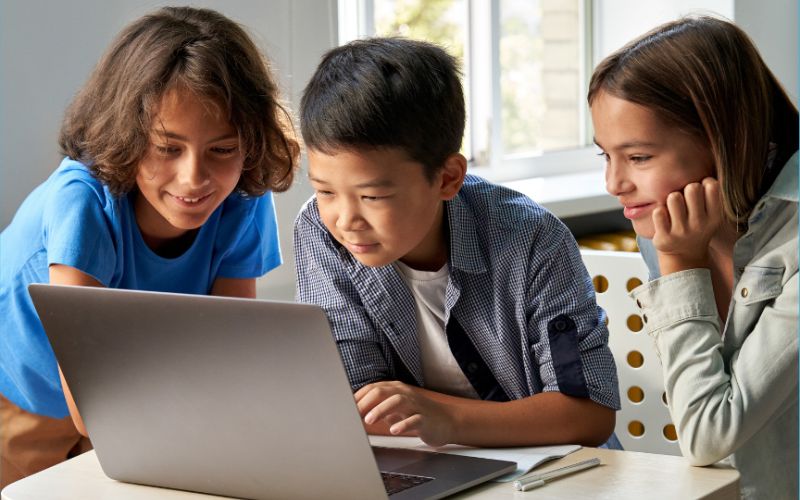
The Role of Technology in Early Childhood Education
In the UK’s Early Years Foundation Stage (EYFS) framework, technology plays a significant role in shaping children’s early learning experiences. Covering essential areas like mathematics, communication, and expressive arts, EYFS provides a foundation for children’s growth from birth to age five. Incorporating technology into the EYFS curriculum offers a unique opportunity to cultivate early digital literacy, which is crucial in preparing children for the digital age.
By engaging young learners with age-appropriate technology activities, educators can stimulate curiosity and foster a love for discovery, says Tinkererbox.com. When introduced in playful and creative ways, technology helps children explore the world around them, build problem-solving skills, and set the stage for future success in STEM-related fields.
Introducing Technology to Young Learners in Playful Ways
When integrating technology into early education, it’s important to focus on making it fun and accessible. Technology for young children doesn’t have to involve complicated devices or coding; it can be introduced through everyday objects and simple interactive activities.
For example:
- Everyday Technology: Devices like calculators, toy phones, or remote controls teach children how technology helps us communicate and solve problems.
- Basic Tools: Magnets, simple pulleys, or wheels illustrate how technology exists in the world around them, beyond screens and devices.
- Interactive Learning Toys: Tools like educational tablets or programmable toys can introduce children to technology in a controlled, hands-on environment.
These activities promote early tech literacy, helping children understand that technology is not just about devices but about how things work. Starting with simple, interactive experiences fosters a deeper interest in the technology that shapes our everyday lives.
Why Technology Matters in Early Childhood Development
Incorporating technology into early childhood learning is essential for building foundational skills that go beyond tech itself. According to research from organizations like Nature, early engagement with technology boosts creative problem-solving, critical thinking, and collaboration—skills that are vital in the 21st century.
Key benefits of integrating technology in early childhood include:
- Enhancing Digital Literacy: Introducing children to technology early helps them navigate and understand the digital world more confidently.
- Building Critical Thinking: Interactive tech activities require children to think critically about how things work and how they can use tools to solve problems.
- Boosting Fine Motor Skills: Using technology-related toys and devices improves hand-eye coordination and motor skills.
- Encouraging Communication: Technology activities often involve teamwork and communication, helping children develop essential social skills.
- Nurturing Curiosity: Technology sparks curiosity and the desire to explore, laying a foundation for lifelong learning, according to IBO.
These skills are critical for early childhood development and can be effectively nurtured through age-appropriate tech activities in the EYFS framework.
Strategies for Introducing Technology into the EYFS Framework
Incorporating technology into the EYFS curriculum is a dynamic process. By carefully aligning tech-based activities with EYFS learning objectives, educators can help young children engage with technology in a meaningful and enriching way.
- Age-Appropriate Technology Activities
Tailor technology-based tasks to the child’s age and development level. For younger children, interactive toys and simple tech tools are ideal, while older preschoolers can experiment with basic coding or robotics toys. - Play-Based Learning with Technology
Instead of using technology as a passive learning tool, integrate it into active, play-based learning. STEAM activities that combine technology with arts or physical play offer a multi-sensory experience that keeps children engaged while promoting creativity and problem-solving. - Blending Guided Instruction with Independent Exploration
Offer a mix of structured tech activities led by teachers or parents, alongside opportunities for independent exploration. Children can use interactive tools like tablets or programmable robots to follow instructions, then discover new ways to solve problems on their own. - Using Everyday Objects to Teach Tech Concepts
Common household objects like remotes, wheels, or magnets can help explain basic technological concepts. These simple tools allow children to understand technology in everyday life without needing complex devices. - STEAM Boxes Aligned with EYFS
Using resources like a STEAM Box designed around the EYFS framework can simplify the integration of technology into everyday learning. These boxes often include tech-based activities that engage children in interactive learning while meeting EYFS goals.
Exploring Technology Through the Pizza Maths STEAM Box
A great example of integrating technology into early learning is the Pizza Maths STEAM Box, which aligns with EYFS objectives and introduces children to tech-related concepts through play.
- Mathematics
Children use a combination of physical tools and interactive tech elements to explore numbers, counting, and fractions. These tech-driven experiences bring math to life, making learning more engaging and accessible. - Communication and Language
Through role-playing restaurant scenarios, children can use toy phones or tablets to take orders, helping develop their communication skills and understanding of how technology facilitates interaction. - Understanding the World Through Tech
Children can explore how technology impacts the real world by simulating a pizza restaurant, using toy devices to track orders or monitor cooking times. This hands-on experience teaches them about the practical applications of technology in everyday life. - Art and Design with Technology
Children can use digital drawing tools to design pizza-related artwork, blending creativity with early digital literacy. - Physical Development
Interactive tech activities, such as pressing buttons on a toy tablet or using a stylus, improve hand-eye coordination and fine motor skills, crucial for young learners. - Personal and Social Growth
Completing technology-based tasks encourages children to work independently, fostering confidence and resilience in solving tech-related challenges.
Preparing Young Learners for the Digital Future
Integrating technology into the EYFS curriculum is vital for developing early tech literacy and essential life skills. By using engaging, age-appropriate tools and activities, educators and parents can create a tech-rich learning environment that fosters curiosity, critical thinking, and a love for exploration. With resources like the STEAM Box, introducing children to technology becomes an exciting and interactive journey, equipping them with the skills they’ll need for the future.
Whether through playful coding exercises or simple tech tools, the foundation for a tech-savvy future begins in the early years.























